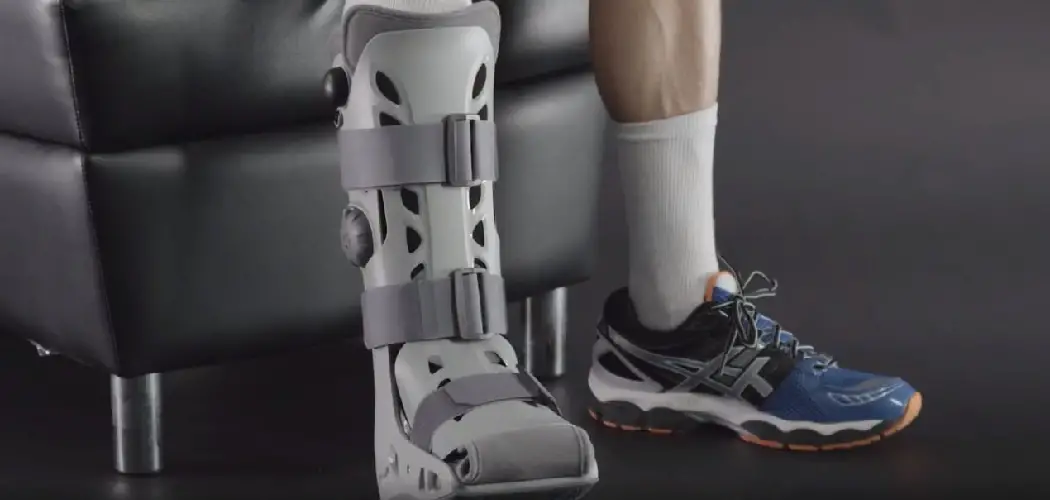Finding a comfortable way to sleep can be tough if you wear a walking boot. Depending on the type of boot and your personal preferences, there are several ways to make sleeping in a walking boot more comfortable. In this blog post, we’ll discuss some of the best ways how do you sleep comfortably in a walking boot so you can get the rest you need.
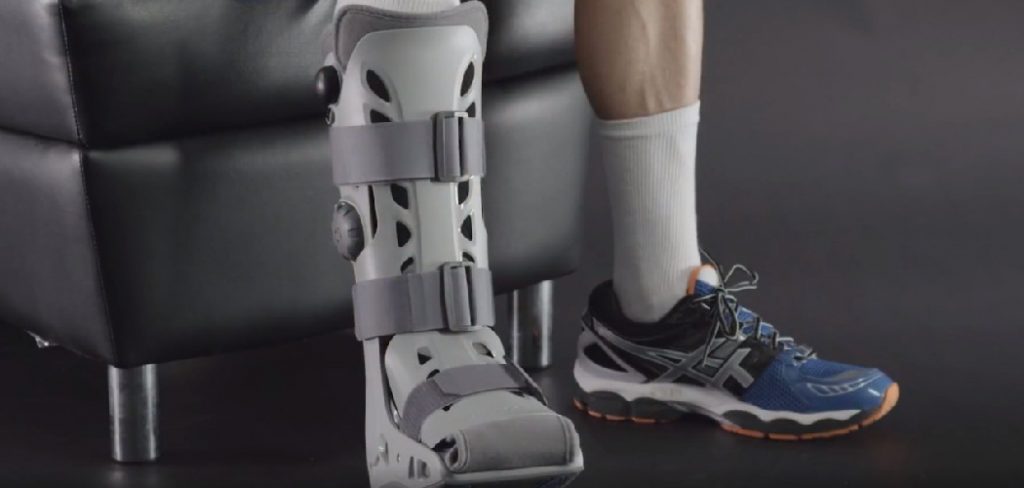
Summary: Sleeping in a walking boot can be uncomfortable, but there are a few tips and tricks to make it more comfortable. Keeping your foot elevated above the level of your heart can help reduce swelling, and using cushions or pillows around the boot for support can help make sleeping more comfortable. Additionally, adding extra padding to the lining of the boot can add comfort and reduce pressure points.
Is It Safe to Sleep in a Walking Boot?
Before we get into the nitty-gritty of how to sleep in a walking boot, let’s answer the question on everyone’s mind: is it safe to sleep in a walking boot?
The short answer is yes, sleeping in a walking boot is safe. The boot is designed to protect your foot or ankle, and sleeping in it will not interfere with its function. It is important, however, to follow your doctor’s or orthodontist’s recommendations on how long to wear the boot.
Benefits of Sleeping in a Walking Boot
There are a few benefits to sleeping in a walking boot, including:
Protect Your Foot or Ankle:
The main purpose of a walking boot is to protect your foot or ankle. If you have a broken bone or severe sprain, sleeping in the boot will help keep your foot or ankle immobile and reduce the risk of further injury. It can also help you avoid putting weight on your foot or ankle, which is important for healing.
Pain Relief:
If you’re experiencing pain in your foot or ankle, sleeping in a walking boot can help relieve some of the discomforts. The boot helps immobilize the area, reducing inflammation and pain. It can also help to distribute your weight evenly, which can take pressure off your foot or ankle.
Avoid Further Injury:
Sleeping in a walking boot can also help you avoid further injuring your foot or ankle. If you move around a lot in your sleep, you could unintentionally put pressure on your foot or ankle, which could cause more damage. Wearing a boot helps keep your foot or ankle in one place, reducing the risk of further injury.
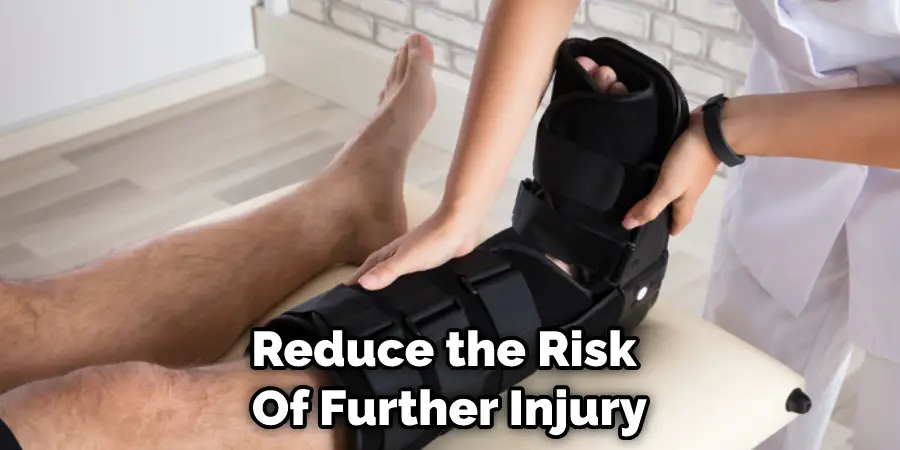
Improve Sleep Quality:
Getting a good night’s sleep can be difficult if you’re in pain. Sleeping in a walking boot can help improve your sleep quality by reducing pain and inflammation. Getting a good night’s sleep is important for healing and can help you feel better overall.
Promote Healing:
Getting a good night’s sleep is important for healing. Sleeping in a walking boot can help you get the rest you need so your body can heal. If you’re not getting enough sleep, it can delay your healing process. It can also lead to other problems, such as fatigue and anxiety.
A Complete Guide to How Do You Sleep Comfortably in a Walking Boot
1. Find a Comfortable Position.
The first step to how do you sleep comfortably in a walking boot is to find a comfortable position. If you can, try to sleep on your back or side. This will take the pressure off of your foot or ankle and help you sleep more comfortably. If you can’t sleep on your back or side, try to sleep with a pillow under your knee. This will help keep your leg comfortable and reduce pressure on your foot or ankle.

2. Use a Body Pillow.
If you don’t have a body pillow, now is the time to get one. A body pillow can help support your back, hips, and knees, taking the pressure off your foot or ankle. It can also help you sleep in a more comfortable position. If you don’t have a body pillow, you can use a regular pillow to support your back and hips.
3. Place a Pillow Under Your Ankle.
If you’re sleeping on your back or side, place a pillow under your ankle to keep it elevated. This will help reduce swelling and pain. If you’re sleeping on your stomach, place a pillow under your knee to keep your leg comfortable. You can use a rolled-up towel or blanket if you don’t have a pillow.
4. Sleep on Your Side.
If you’re experiencing pain in your foot or ankle, sleeping on your side can help take the pressure off. For example, place a pillow under your ankle to help keep it elevated and add an extra cushioning layer. You can also place a pillow between your knees to help keep your hips and spine in alignment.
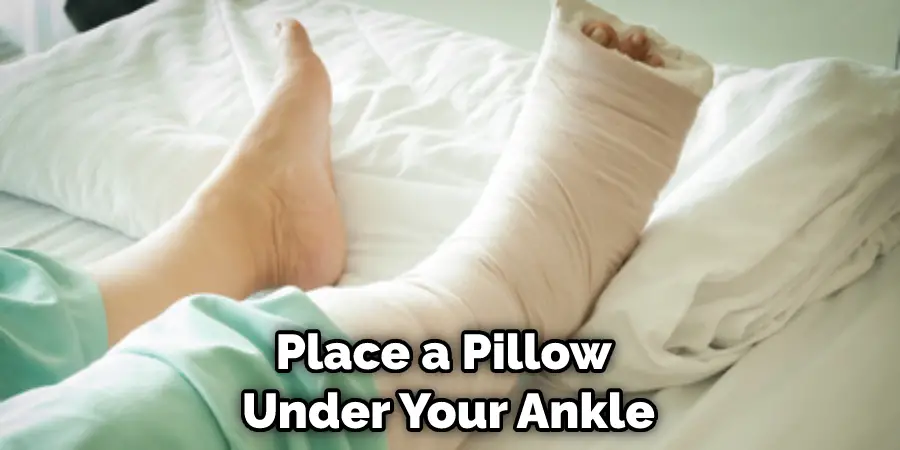
5. Try a Foam Wedge.
If you’re having trouble keeping your foot or ankle elevated, a foam wedge can help. Foam wedges are available at most stores that sell bedding and can be placed under your mattress to elevate your head, feet, or both. If you’re using a foam wedge to elevate your feet, place it under the sheets so it doesn’t slip during the night.
6. Use a Heating Pad.
If you’re experiencing pain, a heating pad can help. Place the heating pad on the walking boot and set it to a comfortable temperature. The heat can help to reduce pain and inflammation. Just be sure not to fall asleep with the heating pad on, as this could cause burns.
7. Stretch Before Bed.
If you’re experiencing pain in your foot or ankle, stretching can help. Try some gentle calf stretches before bed to help reduce pain. You can also stretch your hamstrings, quadriceps, and hips to help relieve pressure on your foot or ankle.
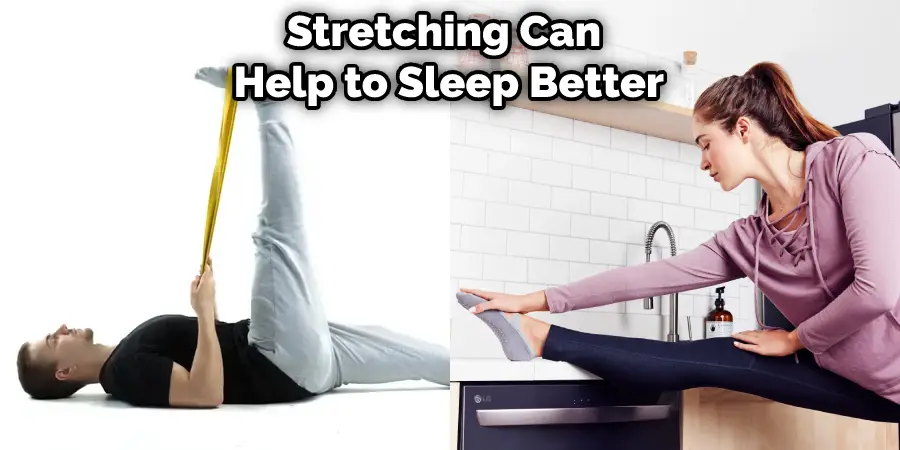
8. Get Out of the Boot During the Day.
If you’re able to, try to take a break from the boot during the day. This will give your foot or ankle a chance to move and stretch. It can also help reduce swelling and pain. If you can’t take a break from the boot, try to prop it up on a stool or chair when you’re sitting down. This will help keep the pressure off of your foot or ankle.
9. Wear Loose-fitting Clothing.
Wearing loose-fitting clothing can help you sleep more comfortably in a walking boot. Avoid clothing that is tight or binding, as this can be uncomfortable. Instead, opt for clothing that is made from breathable fabrics, such as cotton or linen. This will help you stay cool and comfortable during the night.
7. Invest in a Good Walking Boot.
If you’re planning on wearing a walking boot for an extended period of time, it’s important to invest in a good quality boot. Look for a boot that is comfortable, supportive, and durable. You may also want to consider a walking boot with a built-in air pump. This will allow you to adjust the amount of air in the boot, which can help with comfort and fit.
8. Place a Towel Under Your Ankle.
Placing a towel under your ankle can help reduce pressure and pain if you’re sleeping on your side. This will also help keep your ankle from slipping out of the boot. If you’re sleeping on your stomach, place a towel under your knee to keep your leg comfortable. If you don’t have a towel, you can use a rolled-up blanket or piece of clothing.
10. Use an Ice Pack.
If you’re experiencing pain or swelling, an ice pack can help. Place the ice pack on the walking boot and set it to a comfortable temperature. The ice can help to reduce pain and inflammation. Just be sure not to fall asleep with the ice pack on, as this could cause frostbite. Ice packs are available at most stores that sell medical supplies.
11. Loosen the Laces and Straps.
If the laces and straps on your walking boot are too tight, they can cause pain and discomfort. Loosen the laces and straps, so they’re not too tight, but still provide support. You may need to experiment with different levels of tightness to find what’s comfortable for you.
12. Take Pain Medication.
If you’re in pain, over-the-counter pain medication can help. NSAIDs such as ibuprofen and naproxen can help to reduce pain and inflammation. Acetaminophen can also help to relieve pain. Be sure to follow the instructions on the label and talk to your doctor if you’re unsure which medication is right for you.
13. Get a Massage.
If you’re experiencing pain, a massage can help. For example, massaging the foot or ankle can help to reduce pain and inflammation. You can also massage the muscles in your leg to help relieve pressure on your foot or ankle. If you don’t know how to give a massage, many books and videos can teach you.
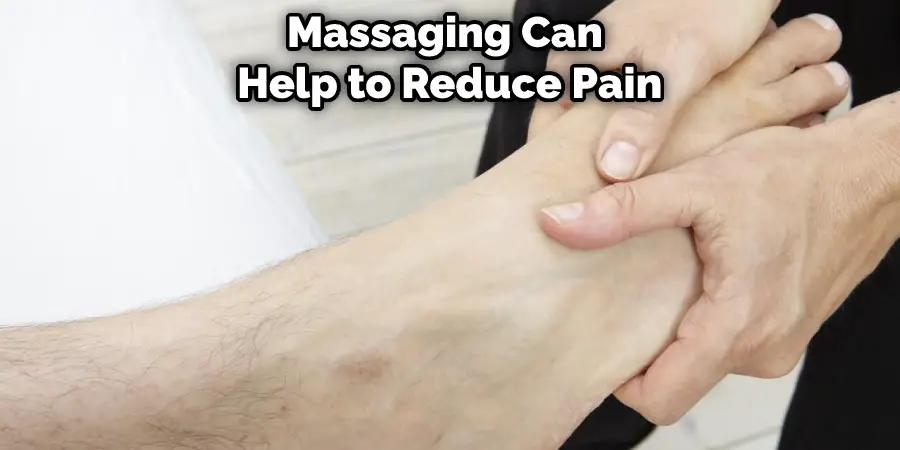
14. Use Essential Oils.
Many essential oils can help to reduce pain and inflammation. Some popular essential oils for foot pain include lavender, peppermint, and eucalyptus. You can add a few drops of essential oil to a diffuser or apply it before bedtime.
15. Wear a Sock Over the Boot.
If you’re having trouble keeping the boot on, try wearing a sock over it. This can help to keep the boot in place and provide an extra layer of warmth. You can also try wearing a pair of pants over the boot to help keep it in place.
Frequently Asked Questions
Are You Supposed to Sleep With a Walking Boot on?
There is no universal rule that applies to everyone. In general, it is a good idea to avoid putting pressure on your infected foot if possible. This means avoiding any activities that put a lot of stress on the foot, such as walking or standing for long periods of time in high heels. If you absolutely have to walk or stand in these shoes, it is best to wear a supportive boot instead of a regular walking shoe.
Can I Take Walking Boot Off to Sleep?
Generally, you should avoid taking your walking boots off while you are sleeping. This is because they can cause discomfort and even injuries if they get caught on something in the bed or A mattress. In some cases, it may be necessary to cut away part of the boot so that it does not become a strangulation hazard.
What is the Best Shoe to Wear With a Walking Boot?
When you are using a walking boot, it is important to choose the right shoe. A good option would be a shoes that has arch support and padding along the ankle. Additionally, make sure that the shoe has plenty of ventilation so that your feet don’t get too hot or sweaty. And finally, make sure to go for a style that looks professional and fits well with your outfit.
Choosing the best pair of shoes can seem daunting but by following these tips, you should be able to find exactly what you’re looking for.
Does a Walking Boot Have to Be Tight?
A walking boot should not be tight, but it should fit snugly. This is important because a too-large or too-tight boot can cause excessive pressure on the foot and ankle, leading to dysfunction and injury. When you try on your walking boot, make sure that it sits low on your ankle (below the base of the foot) and fits comfortably around your calf. If you have narrow feet or high arches, then consider getting a custom walker instead of using a standard model.
Conclusion
So, there you have it. Everything you need to know about how do you sleep comfortably in a walking boot: by following these tips, you’ll be sure to get a good night’s sleep and wake up feeling refreshed and pain-free. So, what are you waiting for? Get out there and start enjoying your life again. If you have any other tips or tricks for sleeping well in a walking boot, please share them in the comments below.

